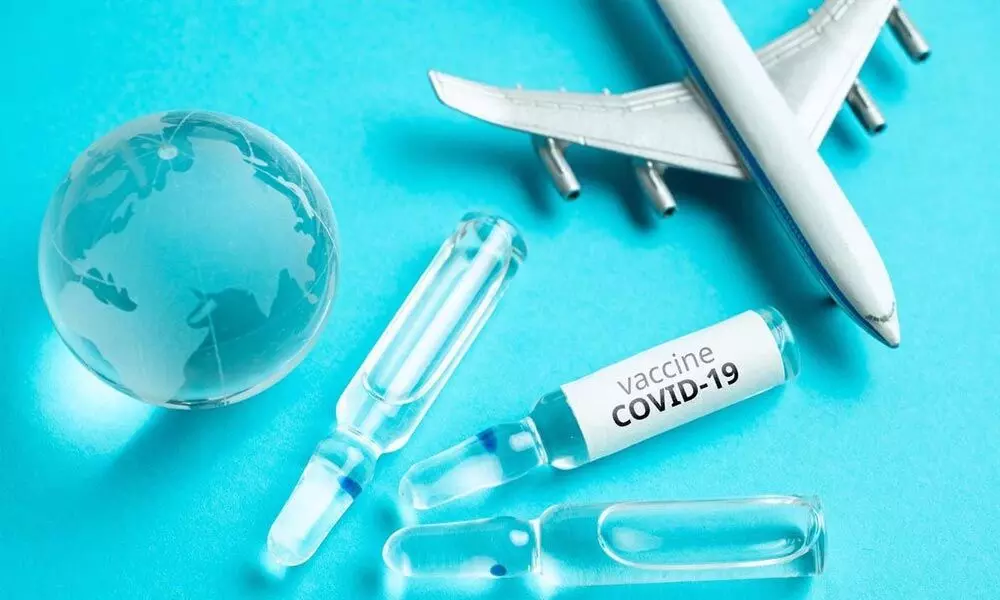Medical tourism looks for booster dose
The market is expected to reach $54.43 bn in 2026 at a CAGR of 11.1%
image for illustrative purpose

The global medical tourism market is expected grow from $32.02 billion in 2021 to $35.77 billion in 2022 at a compound annual growth rate (CAGR) of 11.7 per cent. The growth is mainly due to the companies resuming their operations and adapting to the new normal while recovering from the Covid-19 impact, which had earlier led to restrictive containment measures involving social distancing, remote working, and the closure of commercial activities that resulted in operational challenges. The market is expected to reach $54.43 billion in 2026 at a CAGR of 11.1 per cent.
According to the Ministry of Tourism website, foreign tourist arrivals for medical treatment in India in the calendar year ending December 2020 fell by 73 per cent to 1.82 lakh as compared with 6.97 lakh in 2019. As per experts, corporate hospitals earn 10-15 per cent of the total revenue from medical tourism in the pre-Covid period. Patients generally prefer India for elective surgeries like organ transplant, oncology, joint transplant, heart surgeries, along with complex surgeries too in some cases.
The main types of medical tourism are domestic and international. Domestic health or medical tourism is when a person travels from his or her regular place of residence to another inside the state in order to receive better medical treatment or because the therapy available in his or her usual place of residence is too expensive.
The different treatment types include cosmetic treatment, dental treatment, cardiovascular treatment, orthopaedics treatment, bariatric treatment, fertility treatment, ophthalmic treatment, others and involves various service providers such as public, private. The several healthcare services include medical treatment, wellness and alternative treatment.
High healthcare cost in developed countries is driving growth in the medical tourism market as developing countries are able to provide cheaper treatment. Patients usually travel to developing countries with quality healthcare infrastructure and low healthcare costs.
According to a study conducted by the Centres for Disease Control and Prevention, approximately 0.75 -1.6 million people from the USA travel out of the country for medical care to avoid high treatment cost. For instance, a hip replacement surgery in the USA costs approximately $39,299 while the same surgery in India, Costa Rica or other developing countries would cost between $7000 and $15,000 including logistics.
One of the most critical factors is low-cost treatment. People usually look for similar treatment in nations that can provide it at a lower cost. Apart from that, in some countries, obtaining a visa requires a lengthy process. India is consistently working to simplify and improve the process, allowing more international medical tourists to visit the country.
Factors leading to the growth of market are the availability of high quality treatment at low costs, increasing demand for fertility treatments, alternative medicine, aesthetic pleasure and convenience to patients. The main challenges to the market are regulatory issues, no provisions for follow up care, unsuitable environment and problems associated with travelling, lack of international accreditations and strong competition from other Asian countries. The government is involved in promotional activities and provides several incentives to help the market grow. The market players can be categorised as hospitals and medical tour facilitators. The market is dominated by private hospitals as they provide an end-to-end service that combines personalized services rendered in the hotel industry to top-of-the-line quality healthcare.
Due to the low-cost treatments available in India, it ranks at number 7 amongst the 20 wellness tourism markets with over 560 lakh trips made to India for medical value tourism generating $16.3 billion in revenue. It also ranks at number 3 in wellness-focused countries in the Asia Pacific. Tourists from Bangladesh, Afghanistan, Oman, Iraq, Maldives, Nigeria, and Kenya are amongst the nations whose citizens visit India for medical tourism.
The medical value tourism of India is surmised to reach $13 billion after the Covid setback in 2020. The government of India has set up facilitation centers for international tourists in Delhi, Mumbai, Chennai, Bangalore Hyderabad, Goa, and Kolkata.
The Government of India has taken proactive steps to increase medical tourism in India; E-visa for tourists; Preferred treatments in India by International Medical Tourists; Cost-effectiveness.
In India, the tourism sector is expected to grow 6.9 per cent annually to $460 billion by 2028, which is 9.9 per cent of the GDP, according to the World Travel and Tourism Council (WTTC). Travelling has undergone a major transformation over the past two years since the post-pandemic era began. The National Council of Applied Economic Research (NCAER) reports that tourism in India won't return to pre-pandemic levels until 2026.
The best infrastructure is in India, as well as the most competent healthcare professionals, make it an ideal destination for dental and medical treatments for international travellers. By 2025, medical tourism in India is expected to reach $50 billion.

